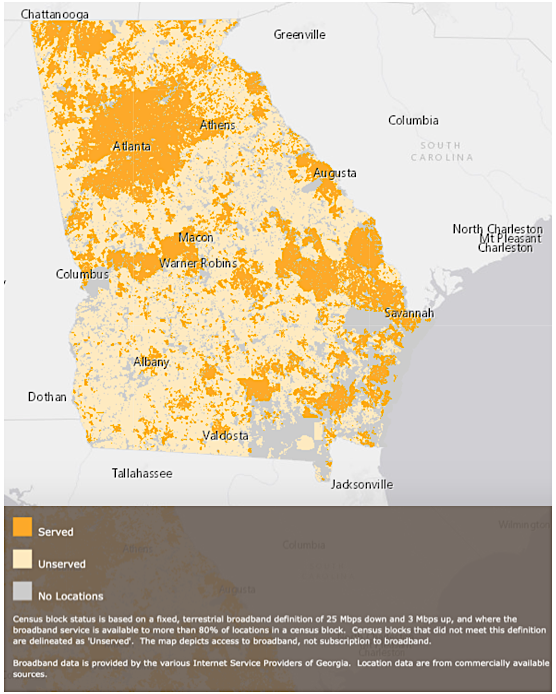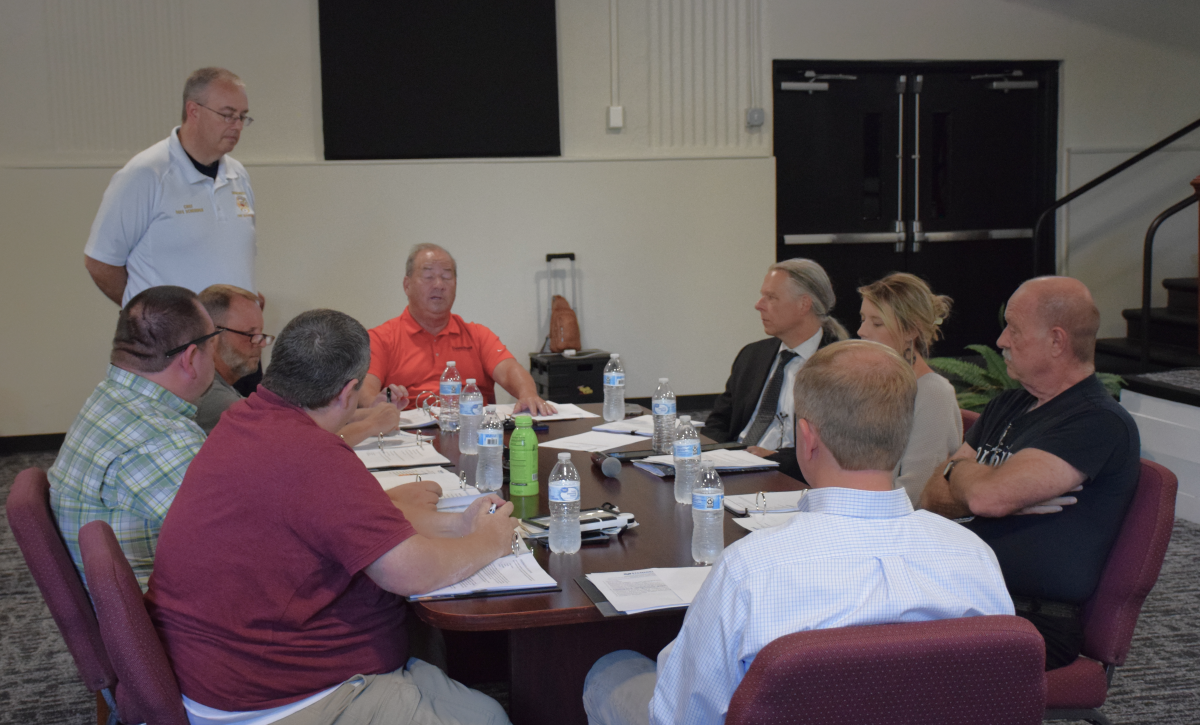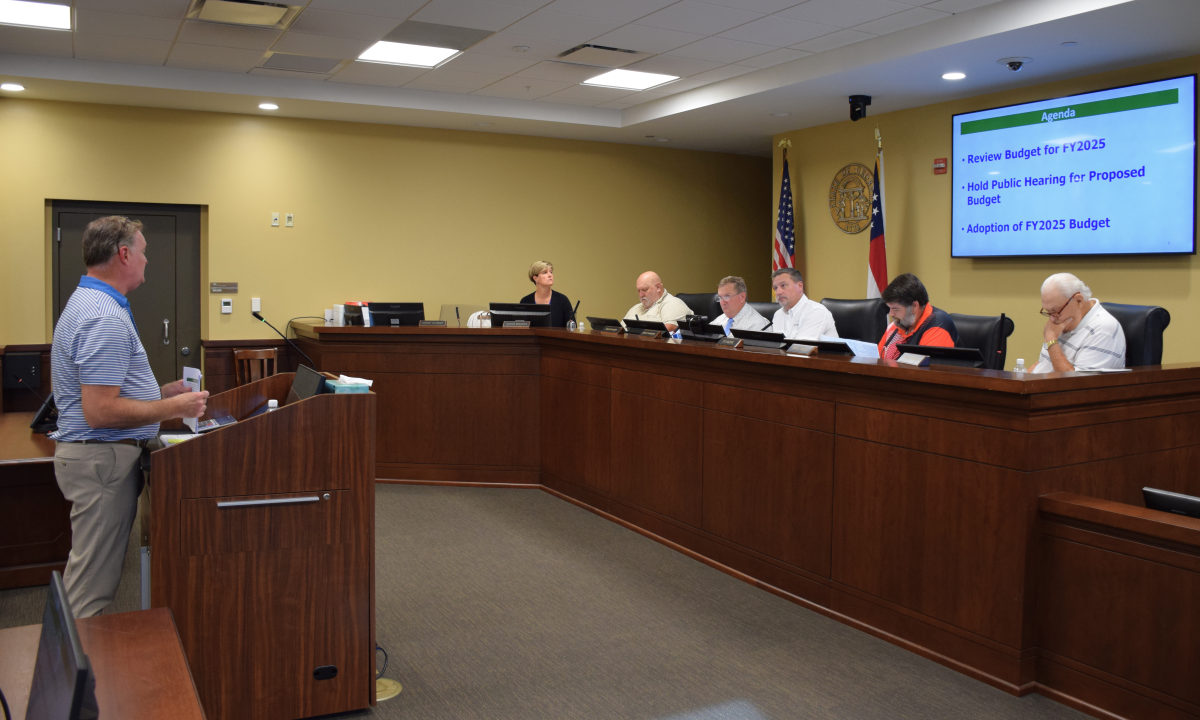
Want to know where to get good internet service in Georgia? Well now you can pinpoint it on a map.
On July 1, Georgia launched its new Broadband Availability Map. The map outlines areas in the state where high-speed internet is available and where it is not.
Those areas marked as ‘served’ meet the minimum Federal Communications Commission’s (FCC) high-speed internet standard of twenty-five megabits per second download and three megabits per second upload (25/3 mpbs). ‘Unserved’ areas do not have access to those speeds.
Currently, more than a million Georgians lack access to reliable high-speed internet service, according to the Georgia Department of Community Affairs. Of the more than 507,000 homes and businesses lacking access, nearly 70% of them are in rural areas.
Gov. Brian Kemp says the new map will “enable the private sector to better see where Georgians lack access to high-speed internet, improve open-market competition, and help providers explore partnerships to address the connectivity needs of our state.”
“Not only should the new mapping tool help stimulate private investment, but it also enables us to support local communities and track progress toward serving the unserved,” says Department of Community Affairs Commissioner Christopher Nunn.
“First in nation” approach
This new Georgia broadband map is the first to utilize an enhanced location-level methodology to map broadband access with a high degree of precision. This “first in the nation” approach was a collaborative effort between private providers and the Georgia Broadband Office within the Department of Community Affairs (DCA).
Encouraged by the mapping initiative, providers have announced several recent infrastructure investments totaling nearly $38.2 million. The new investments are projected to serve more than 23,000 locations in every corner of the state.
“Broadband providers are not only key to solving the connectivity issues, but they have also been great partners in developing these maps,” says Georgia Technology Authority Executive Director Calvin Rhodes. “The providers, along with an outstanding team from UGA’s Carl Vinson Institute of Government, have worked diligently for more than a year to realize a Georgia Broadband methodology that has earned nationwide attention.”
While the new map signifies where high-speed internet service is available, it does not indicate where Georgians are subscribing to internet services. That information is held by the private providers who have service offerings in various areas.
“At the onset of the coronavirus pandemic, preliminary mapping data proved extremely useful in supporting Department of Education efforts to ensure student access to Wi-Fi solutions,” says Deana Perry, Executive Director of the Georgia Broadband program. Perry says the Georgia Broadband office will continue to work closely with communities, providers, and state agencies to support effective public-private partnerships aimed at serving those who are currently unserved.







